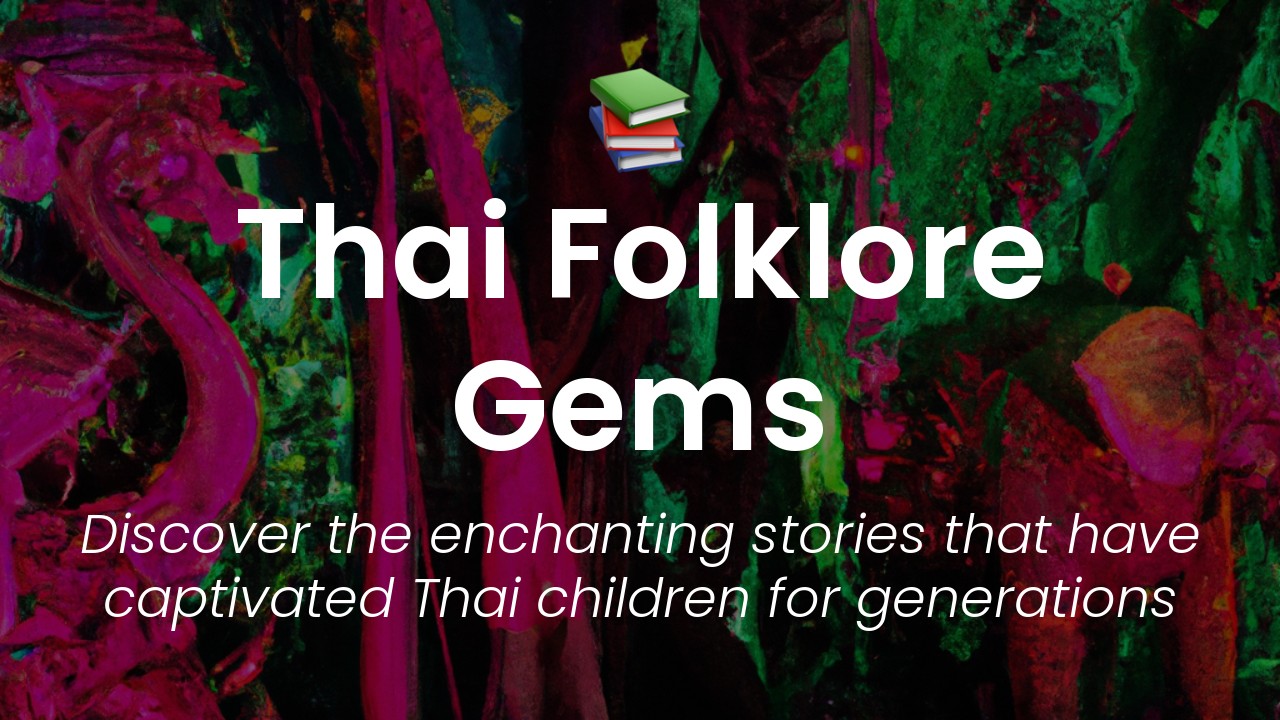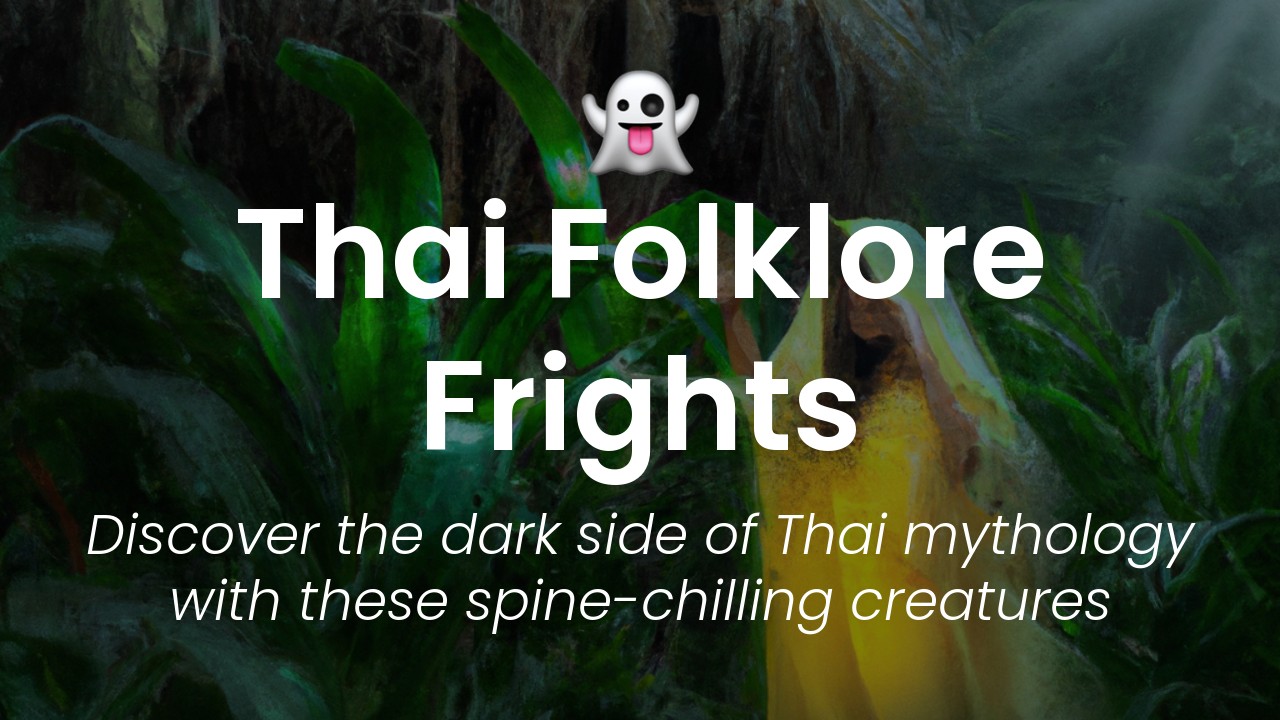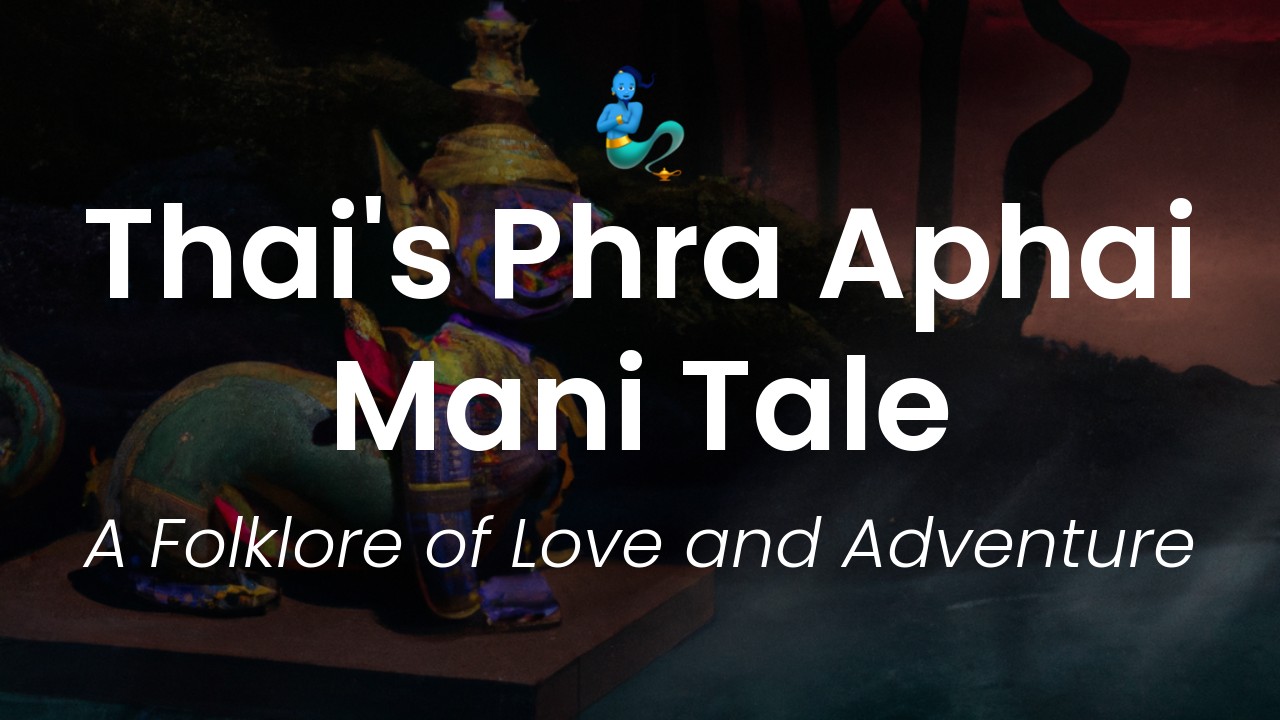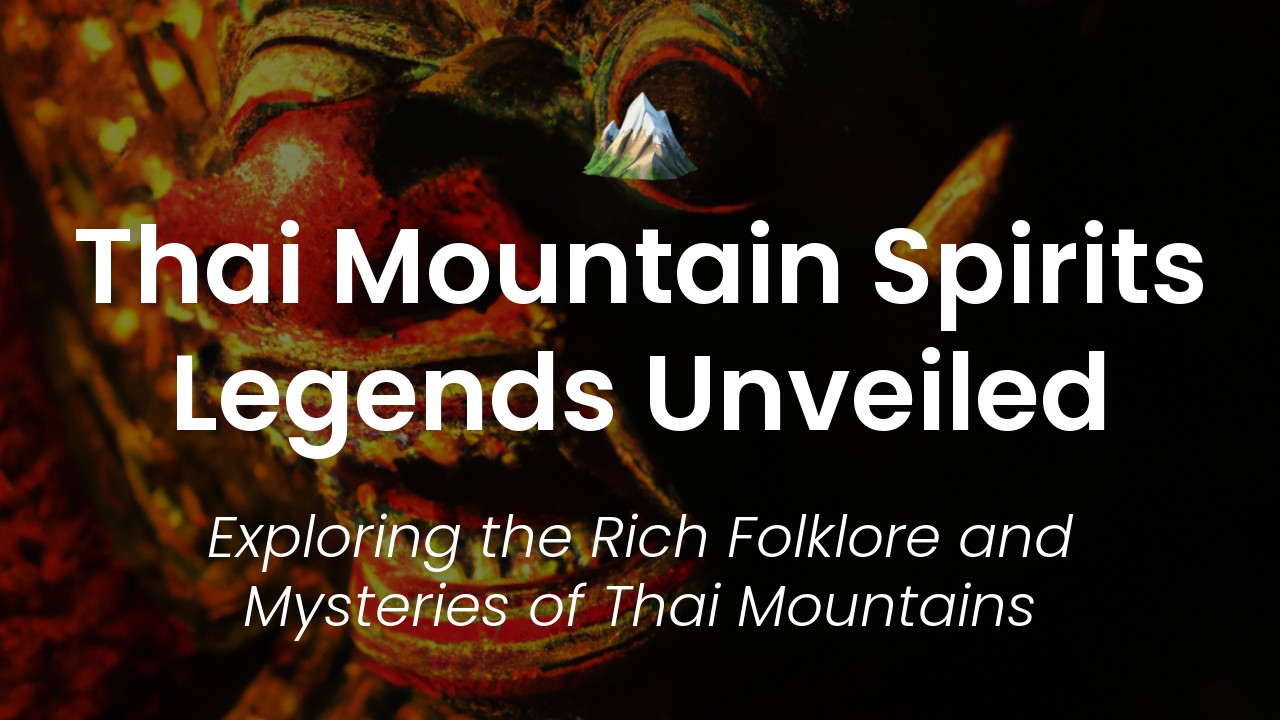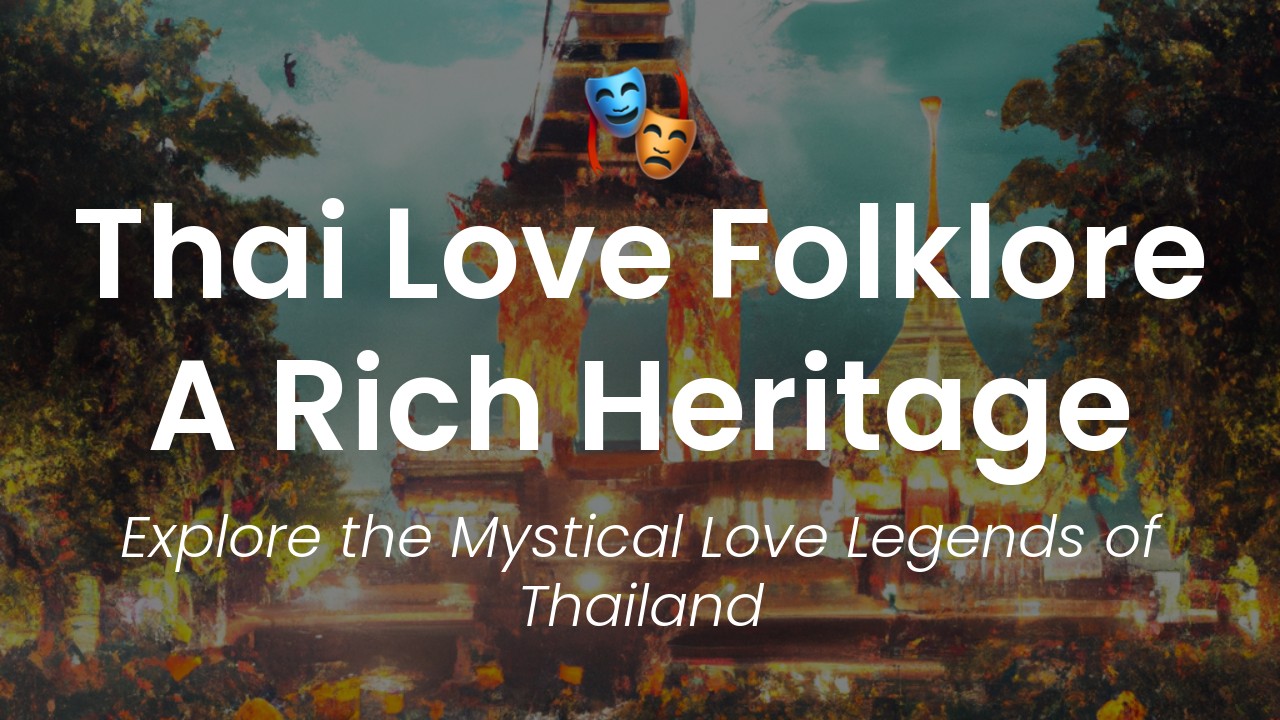Hi there, my lovely readers! It's Sirinya, and I am thrilled to bring you yet another exciting blog post today from the land of smiles, Thailand. If you have been following my blog, you know that I always try to uncover the hidden gems of Thai culture and tourism for you.
Today, I want to invite you to join me on a journey through the fascinating and colorful folklore behind the Thai festivals. As you might know, Thailand is renowned for its numerous vibrant festivals, taking place all year round. From the water-splashing Songkran Festival to the enchanting Loy Krathong Night, these festivals exhibit the rich cultural heritage of Thailand.
But have you ever wondered about the stories behind these celebrations? I certainly have, and after some in-depth research, I have gathered some intriguing tales that will undoubtedly leave you amazed. Thai folklore is filled with supernatural creatures, alluring myths, and legends that go back centuries. These fascinating stories are the essence of Thai folklore, and they add an element of mystery and excitement to the already vibrant festivals.
So, put on your favorite Thai silk, grab a cold Thai tea, and let's explore the fascinating folklore of Thai festivals together. It is my hope that this article will offer you some insight into the Thai culture and inspire you to visit the Land of Smiles soon.
The importance of festivals in Thai culture
Festivals are an integral part of Thai culture, reflecting the country's rich history, diverse ethnic groups, and deep spiritual traditions. These annual events bring people together to celebrate their common heritage, share stories and experiences, and express their gratitude to the spirits and deities that guide and protect them.
But festivals in Thailand are more than just colorful parades and pageantry. They are also deeply rooted in folklore and mythology, conveying messages and teachings that have been passed down through generations. In this article, we will explore some of the fascinating folklore behind some of Thailand's most beloved and well-known festivals, including Songkran, Loy Krathong, Phi Ta Khon, the Naga Fireball Festival, and the Vegetarian Festival.
Origins and meanings of Songkran
Songkran, the Thai New Year, is one of the most popular festivals in Thailand, celebrated every year in April. It usually involves water throwing, where people douse each other with water as a symbol of purification and renewal, but the festival is more than just a massive water fight.
The roots of Songkran can be traced back to the Buddhist tradition of paying respects to elders and seeking their blessings. During this festival, young people pour scented water on the hands of their elders and ask for their forgiveness, while monks are invited to temples for special ceremonies and offerings.
The mythology behind Songkran is closely tied to the legend of Thammabal Kumara, a wise and just prince who ruled over a prosperous kingdom. Thammabal Kumara was known for his compassion and his dedication to the happiness of his subjects, but he was also a fierce warrior who defended his land against enemies.
As the legend goes, Thammabal Kumara's kingdom suffered from a severe drought that lasted for years, causing crops to wither and people to suffer. The prince knew that he had to do something to appease the gods and bring rain to his land. He gathered his army of elephants and set out to cleanse himself and his kingdom in the nearby river.
As he was bathing, a naga, or a water serpent, rose from the depths of the river and snatched the prince, taking him to the underworld. The gods were pleased with Thammabal Kumara's sacrifice and sent rain to his land, but the prince was trapped in the naga's realm forever.
The festival of Songkran is seen as a way of commemorating Thammabal Kumara's sacrifice and the importance of water in Thai culture. It is also a time for people to come together, reconnect with their loved ones, and enjoy the beginning of a new year.
Loy Krathong and the floating of flower baskets
Loy Krathong is another popular festival in Thailand, celebrated every year in November. Similar to Songkran, the festival is known for its vibrant colors and festivities, but it also has a deep spiritual significance.
Loy Krathong involves the floating of flower baskets, or krathongs, on rivers and canals. People decorate their krathongs with flowers, candles, and incense, and release them into the water as a way of letting go of their troubles and negative thoughts. The festival is often seen as a way of showing gratitude to the goddess of water, Mae Khongkha, for her blessings and protection.
The folklore behind Loy Krathong is varied and complex, but one of the most popular tales tells the story of Nang Noppamas, a beautiful woman who lived during the Sukhothai era. Nang Noppamas was known for her talents in weaving and creating intricate flower arrangements, and she was summoned by the king to create a special krathong for the goddess of water.
The krathong that Nang Noppamas created was made of lotus leaves and adorned with flowers and candles, a design that has become a symbol of the festival. During the night of Loy Krathong, people release their krathongs as a way of thanking the goddess and seeking her blessings.
The colorful masks of Phi Ta Khon
Phi Ta Khon, or the Ghost Festival, is a unique festival celebrated in Dan Sai, a small town in Loei province. The festival is known for its elaborate costumes and masks, featuring grotesque, exaggerated features and bright colors.
The festival is rooted in traditional animist beliefs that spirits play an active role in everyday life, and that they must be appeased and respected. During the festival, participants dress up as ghosts and spirits and parade around the town, dancing and singing as a way of driving away evil spirits and attracting prosperity.
The mythology behind Phi Ta Khon is linked to the Buddhist legend of Prince Vessantara, a kind and generous prince who gave away everything he owned, including his children, to those in need. The prince's wife, Mati, spent years searching for her children and eventually died of exhaustion.
As Mati's spirit wandered the earth, she returned to her hometown, where she was welcomed by the local villagers. The villagers rejoiced at her return and celebrated with dancing and music, inspiring the tradition of the Ghost Festival.
The mythical creatures of the Naga Fireball Festival
The Naga Fireball Festival is a unique event celebrated in Nong Khai province, where mysterious fireballs rise from the Mekong River during the full moon in October. The festival is shrouded in mystery and has become a popular tourist attraction in recent years.
The mythology behind the Naga Fireball Festival revolves around the naga, a mythical serpent-like creature that is revered in Southeast Asian folklore. According to legend, the naga live in the Mekong River and are responsible for protecting the people and the land.
During the festival, locals and visitors gather on the banks of the river to witness the fireballs rising from the water. These fireballs are said to be created by the naga, as a way of expressing their power and protecting the river's inhabitants.
The spiritual significance of the Vegetarian Festival
The Vegetarian Festival is a nine-day event celebrated by Chinese communities in Thailand, particularly in Bangkok, Phuket and Hat Yai. The festival is known for its strict dietary restrictions and taboos, but it also has a deep spiritual significance.
During the festival, participants abstain from eating meat, seafood, and dairy products, and adhere to a strictly vegetarian diet. They also observe other taboos, such as not consuming alcohol, smoking, or engaging in sexual activities.
The mythology behind the Vegetarian Festival is linked to the belief that abstaining from meat and other indulgences purifies the body and soul, and allows for communion with the divine. Participants also believe that the festival helps to bring good luck, prosperity, and longevity.
In addition to the dietary restrictions, the Vegetarian Festival is also known for its elaborate processions and ceremonies, featuring floats, dragon dancers, and acrobatic performances. The festival is a beautiful display of Chinese culture and tradition, and a time for reflection, purification, and renewal.
Exploring the regional diversity of Thai festivals
Thailand is a country of diverse cultures and regional traditions, and these differences are reflected in the numerous festivals celebrated throughout the country. From the colorful masks of Phi Ta Khon to the mystical fireballs of the Naga Festival, Thailand's festivals are a rich tapestry of stories, beliefs, and customs.
Whether you are a Thai native or a curious traveler, these festivals offer a unique and fascinating window into the country's history, mythology, and spiritual heritage. By exploring the folklore behind these festivals, we can gain a deeper appreciation for the richness and diversity of Thai culture, and a better understanding of the values and beliefs that guide and inspire its people.


